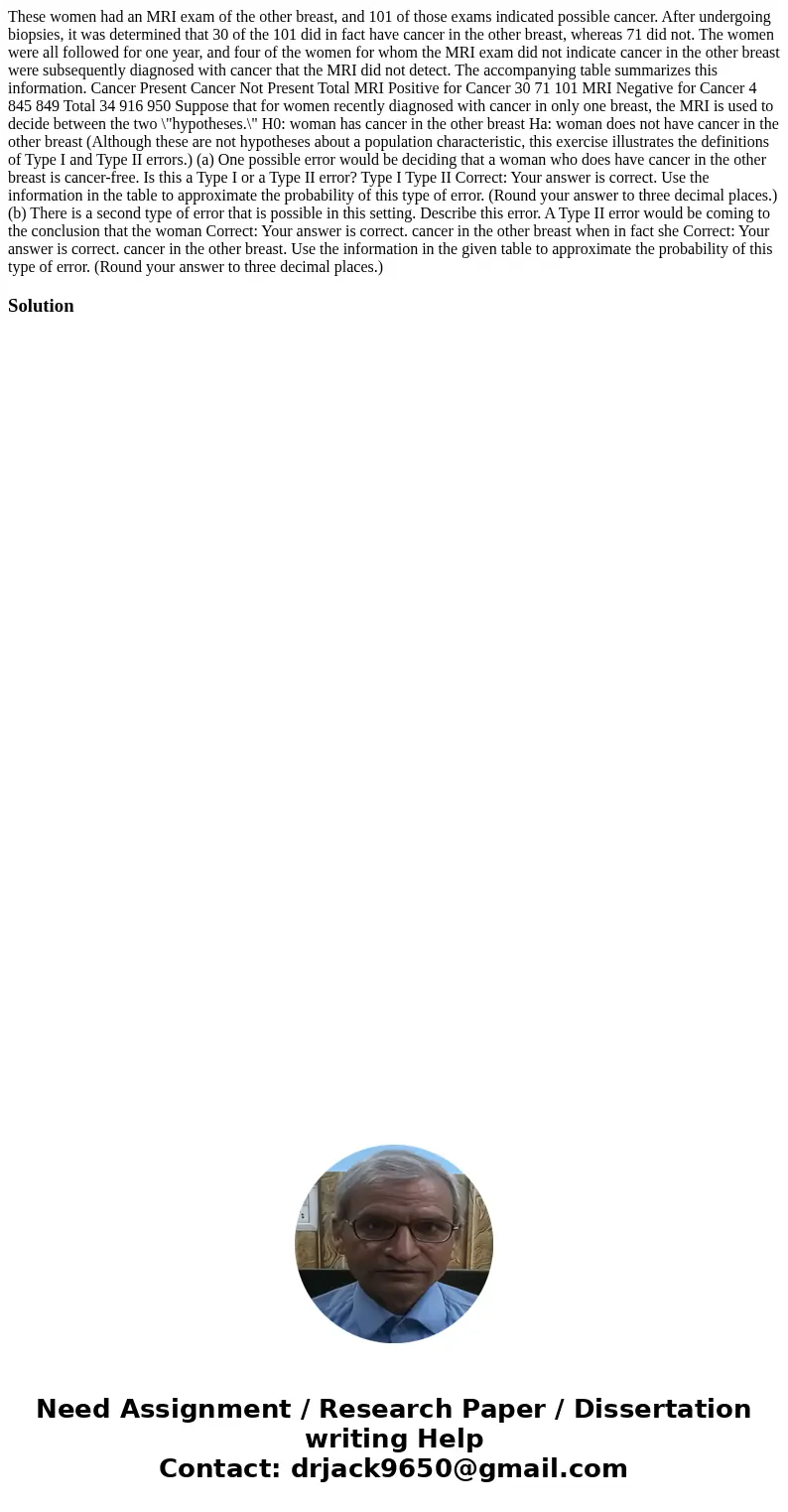These women had an MRI exam of the other breast and 101 of t
These women had an MRI exam of the other breast, and 101 of those exams indicated possible cancer. After undergoing biopsies, it was determined that 30 of the 101 did in fact have cancer in the other breast, whereas 71 did not. The women were all followed for one year, and four of the women for whom the MRI exam did not indicate cancer in the other breast were subsequently diagnosed with cancer that the MRI did not detect. The accompanying table summarizes this information. Cancer Present Cancer Not Present Total MRI Positive for Cancer 30 71 101 MRI Negative for Cancer 4 845 849 Total 34 916 950 Suppose that for women recently diagnosed with cancer in only one breast, the MRI is used to decide between the two \"hypotheses.\" H0: woman has cancer in the other breast Ha: woman does not have cancer in the other breast (Although these are not hypotheses about a population characteristic, this exercise illustrates the definitions of Type I and Type II errors.) (a) One possible error would be deciding that a woman who does have cancer in the other breast is cancer-free. Is this a Type I or a Type II error? Type I Type II Correct: Your answer is correct. Use the information in the table to approximate the probability of this type of error. (Round your answer to three decimal places.) (b) There is a second type of error that is possible in this setting. Describe this error. A Type II error would be coming to the conclusion that the woman Correct: Your answer is correct. cancer in the other breast when in fact she Correct: Your answer is correct. cancer in the other breast. Use the information in the given table to approximate the probability of this type of error. (Round your answer to three decimal places.)
Solution

 Homework Sourse
Homework Sourse